The O Wow! List: 15 Dreamers, Thinkers and Doers
Meet the achievers whose breakthrough ideas took our breath away this year.
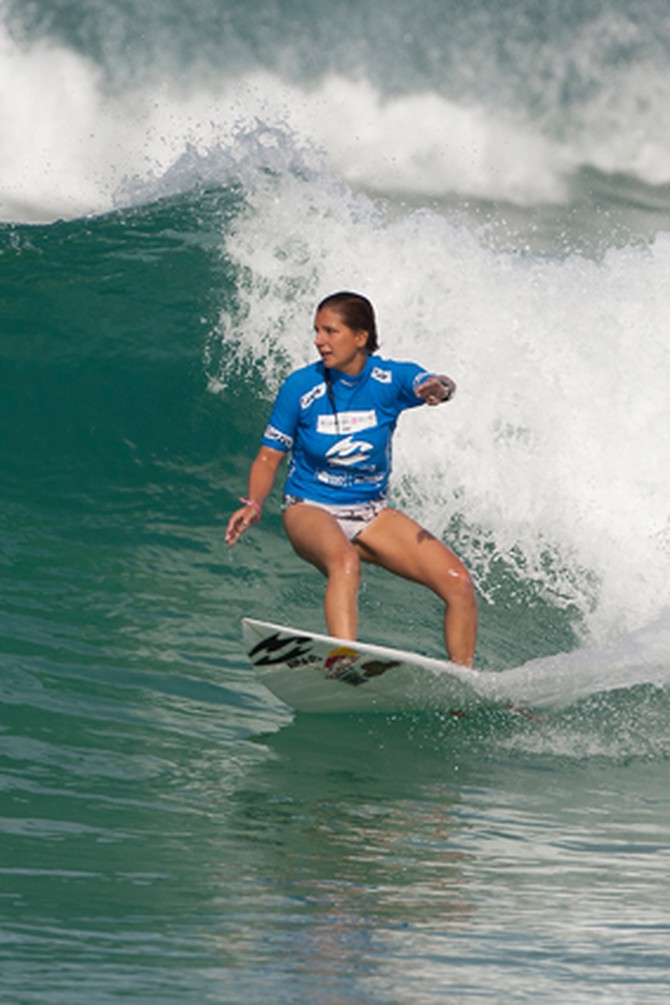
Photo: Getty Images
The Extremist: Maya Gabeira
Who she is:
One of the few female practitioners of tow surfing, a white-knuckle twist on the sport (involving jet skis and other equipment) that enables her to catch waves the size of office buildings.
Her breakthrough: Brazilian Gabeira, 24, holds the current record for biggest wave ever ridden by a woman: a 45-footer at a notoriously sharky break called Dungeons off the coast of South Africa.
Her biggest hurdle: Handling the psychological and physical aftermath of wipeouts so violent they're like underwater explosions. "I've been doing a lot of physiotherapy and trying to find my rhythm again," Gabeira says, of wrestling with a chronic back injury.
Lesson she's learned: Be less anxious and more strategic. In the past, Gabeira says, "I wanted to be everywhere at all times. Now I realize that I just have to be ready for the biggest swells, as healthy and strong as possible for when the conditions are right."
What's next: Spending time at Jaws, a fearsome, wind-whipped, highly technical wave a half-mile off Maui's north shore that occasionally tops 70 feet.
Breakthrough advice: Don't be afraid of fear. "When you're scared and uncomfortable, you can allow yourself not to do anything but sit there and feel that sensation. And you will go past it. The fear kind of mellows out, and what you're left with is more confidence." —Susan Casey
Her breakthrough: Brazilian Gabeira, 24, holds the current record for biggest wave ever ridden by a woman: a 45-footer at a notoriously sharky break called Dungeons off the coast of South Africa.
Her biggest hurdle: Handling the psychological and physical aftermath of wipeouts so violent they're like underwater explosions. "I've been doing a lot of physiotherapy and trying to find my rhythm again," Gabeira says, of wrestling with a chronic back injury.
Lesson she's learned: Be less anxious and more strategic. In the past, Gabeira says, "I wanted to be everywhere at all times. Now I realize that I just have to be ready for the biggest swells, as healthy and strong as possible for when the conditions are right."
What's next: Spending time at Jaws, a fearsome, wind-whipped, highly technical wave a half-mile off Maui's north shore that occasionally tops 70 feet.
Breakthrough advice: Don't be afraid of fear. "When you're scared and uncomfortable, you can allow yourself not to do anything but sit there and feel that sensation. And you will go past it. The fear kind of mellows out, and what you're left with is more confidence." —Susan Casey
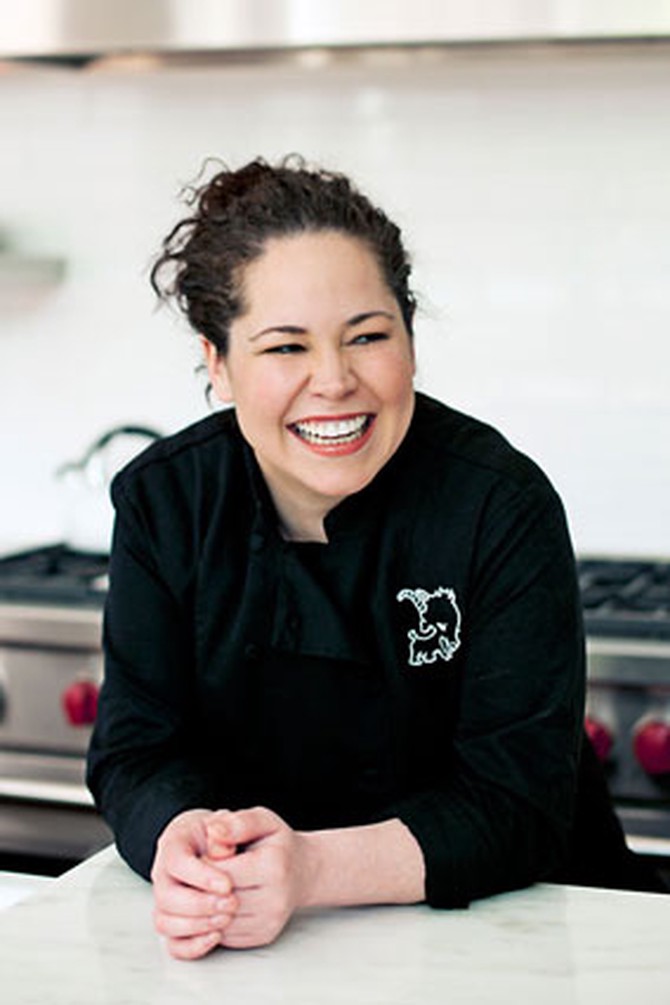
Photo: Anthony Tahlier
The Taste-Maker: Stephanie Izard
Who she is: The only woman to win Bravo's Top Chef competition; the restaurateur behind Girl & the Goat, one of Chicago's toughest-to-get tables; a cookbook author (Girl in the Kitchen hits bookstores this month); and the queen of what she describes as "rustic with a bit of badass" cuisine.
Her background: At 28 Izard opened a much-praised Chicago restaurant called Scylla, then closed it just two years later, in an unplanned stroke of magical timing that freed her to appear on Top Chef. "I'm very impulsive. My parents say, 'You're nuts!' But I've always been like this."
Breakthrough ideas: Spicy, masala-slathered pizza, chickpea fritters with hazelnut hummus and romesco, confit goat belly dunked in bourbon butter—and other unpretentious yet audacious eats.
What's next: "Opening a couple more restaurants, writing a second book, maybe hosting a TV show. Then, at 45, I want to retire to a winery, watch the sunset, and sip bourbon on the porch."
What the experts say: "Stephanie's food is big and bold, not prissy or pretty. It's got substance." —Tom Colicchio, Top Chef judge
How she'll make it happen: "Stay true to myself and work my ass off for the next ten and a half years." —Jeff Chu
Her background: At 28 Izard opened a much-praised Chicago restaurant called Scylla, then closed it just two years later, in an unplanned stroke of magical timing that freed her to appear on Top Chef. "I'm very impulsive. My parents say, 'You're nuts!' But I've always been like this."
Breakthrough ideas: Spicy, masala-slathered pizza, chickpea fritters with hazelnut hummus and romesco, confit goat belly dunked in bourbon butter—and other unpretentious yet audacious eats.
What's next: "Opening a couple more restaurants, writing a second book, maybe hosting a TV show. Then, at 45, I want to retire to a winery, watch the sunset, and sip bourbon on the porch."
What the experts say: "Stephanie's food is big and bold, not prissy or pretty. It's got substance." —Tom Colicchio, Top Chef judge
How she'll make it happen: "Stay true to myself and work my ass off for the next ten and a half years." —Jeff Chu
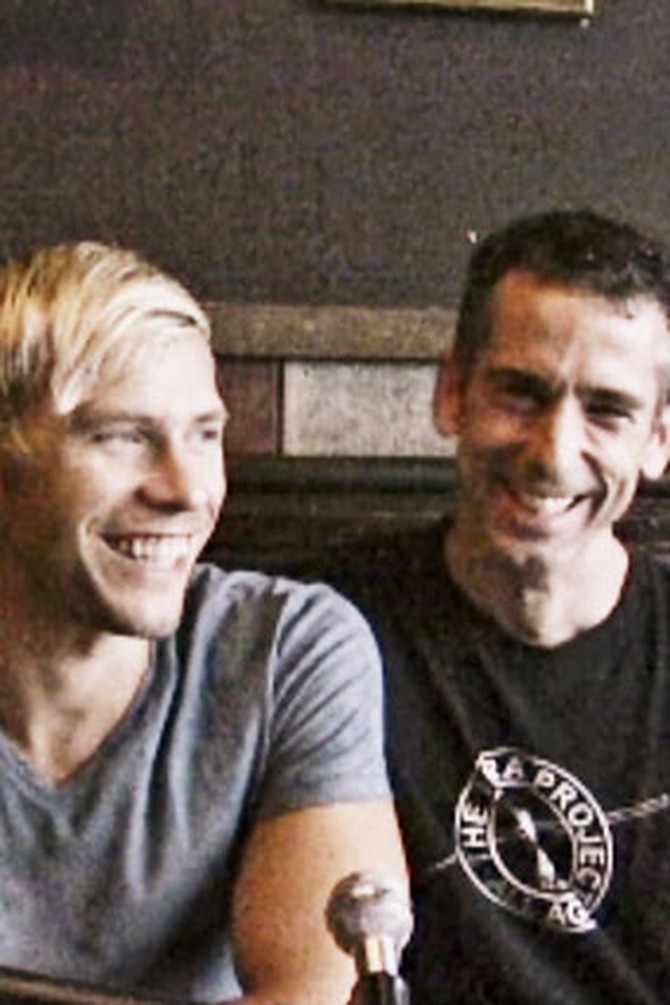
Photo: Courtesy of Dan Savage and Terry Miller
The Messenger: Dan Savage
Who he is:
A self-described "potty-mouthed sex-advice columnist" (the nationally syndicated Savage Love) turned crusader against gay bullying.
His Aha! Moment: When he read about the suicide of 15-year-old Billy Lucas of Indiana last year, Savage started "stewing" over ways to reassure gay teens that acceptance awaits beyond the agonies of high school. "When I came out in the early '80s to my Catholic parents, I was basically telling them I'd never marry or have children, and that I'd live a really marginal life. Since then everything has changed." A comment on his blog ("I wish I could have told Billy Lucas that it gets better") sparked a plan.
Breakthrough idea: Delivering the message directly to struggling teens that the future is worth sticking around for. Savage asked his readers to upload videos of support, hoping for 100 submissions; itgetsbetter.org now boasts more than 25,000 tear-jerking testimonials and encouraging messages from the likes of President Obama, Hillary Clinton, Suze Orman, Stephen Colbert, Kim Kardashian, and thousands more supporters and "lesbian dairy farmers and doctors and regular people who are happy about their lives," he says. Savage's video with his husband, Terry Miller, has been viewed more than a million times. In March they published a book, It Gets Better: Coming Out, Overcoming Bullying, and Creating a Life Worth Living.
Breakthrough advice: "I'm not a gay Gandhi," says Savage with a laugh. "But I hope I've shown that the Internet is a powerful tool. You can use it for porn, or you can use it for good." —Meredith Bryan
His Aha! Moment: When he read about the suicide of 15-year-old Billy Lucas of Indiana last year, Savage started "stewing" over ways to reassure gay teens that acceptance awaits beyond the agonies of high school. "When I came out in the early '80s to my Catholic parents, I was basically telling them I'd never marry or have children, and that I'd live a really marginal life. Since then everything has changed." A comment on his blog ("I wish I could have told Billy Lucas that it gets better") sparked a plan.
Breakthrough idea: Delivering the message directly to struggling teens that the future is worth sticking around for. Savage asked his readers to upload videos of support, hoping for 100 submissions; itgetsbetter.org now boasts more than 25,000 tear-jerking testimonials and encouraging messages from the likes of President Obama, Hillary Clinton, Suze Orman, Stephen Colbert, Kim Kardashian, and thousands more supporters and "lesbian dairy farmers and doctors and regular people who are happy about their lives," he says. Savage's video with his husband, Terry Miller, has been viewed more than a million times. In March they published a book, It Gets Better: Coming Out, Overcoming Bullying, and Creating a Life Worth Living.
Breakthrough advice: "I'm not a gay Gandhi," says Savage with a laugh. "But I hope I've shown that the Internet is a powerful tool. You can use it for porn, or you can use it for good." —Meredith Bryan
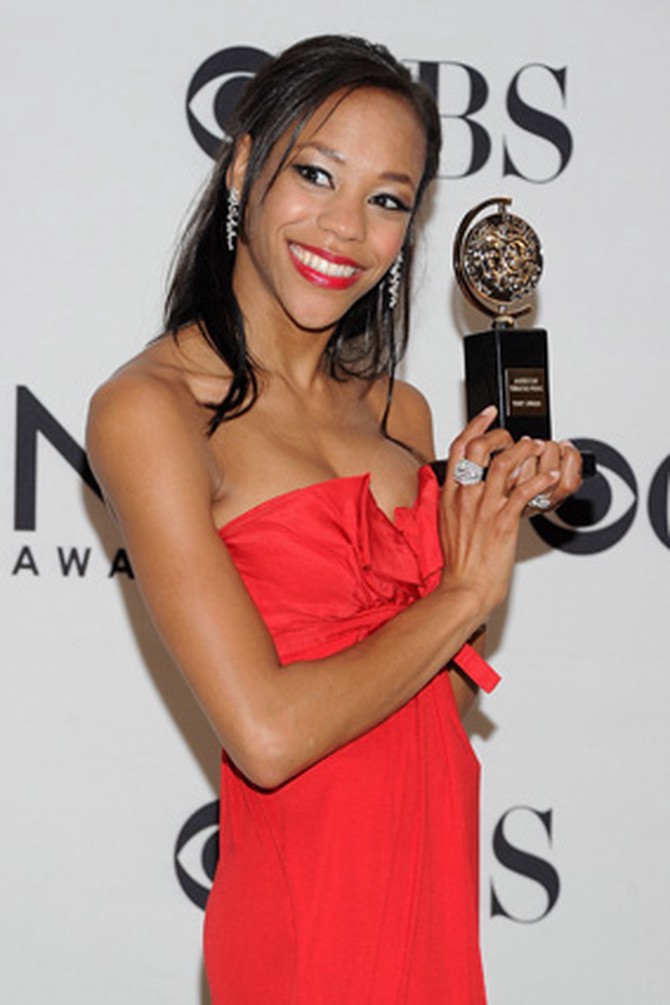
Photo: Getty Images
The Showstopper: Nikki M. James
Her breakthrough:
Playing wide-eyed, angel-voiced Nabulungi in this year's cheeky Broadway hit The Book of Mormon—a performance for which she won a Tony.
Her Aha! Moment: Seeing Cats on Broadway when she was a little girl. "The spectacle and also the simplicity of one person standing on the stage singing a song and telling a story—it moved me."
Her biggest hurdle: Turning down a season at Canada's internationally acclaimed Stratford Shakespeare Festival when she found out her newborn nephew had kidney disease. "There was no guarantee that another job was going to come, but my family needed me. That's when I realized there are more important things than being on a stage. A year later, I'm a Tony Award winner and my nephew is getting a new kidney!"
Lesson she's learned: "We are made from stronger stuff than any of us knows. The number one thing is not even just to keep going but to trust that there's something more. Always."
Breakthrough advice: "When you first tell someone you want to be an actress, they look at you like you're insane. But you have to trust that you are smart enough to make the right decisions for your own life." —Lucy Kaylin
Her Aha! Moment: Seeing Cats on Broadway when she was a little girl. "The spectacle and also the simplicity of one person standing on the stage singing a song and telling a story—it moved me."
Her biggest hurdle: Turning down a season at Canada's internationally acclaimed Stratford Shakespeare Festival when she found out her newborn nephew had kidney disease. "There was no guarantee that another job was going to come, but my family needed me. That's when I realized there are more important things than being on a stage. A year later, I'm a Tony Award winner and my nephew is getting a new kidney!"
Lesson she's learned: "We are made from stronger stuff than any of us knows. The number one thing is not even just to keep going but to trust that there's something more. Always."
Breakthrough advice: "When you first tell someone you want to be an actress, they look at you like you're insane. But you have to trust that you are smart enough to make the right decisions for your own life." —Lucy Kaylin
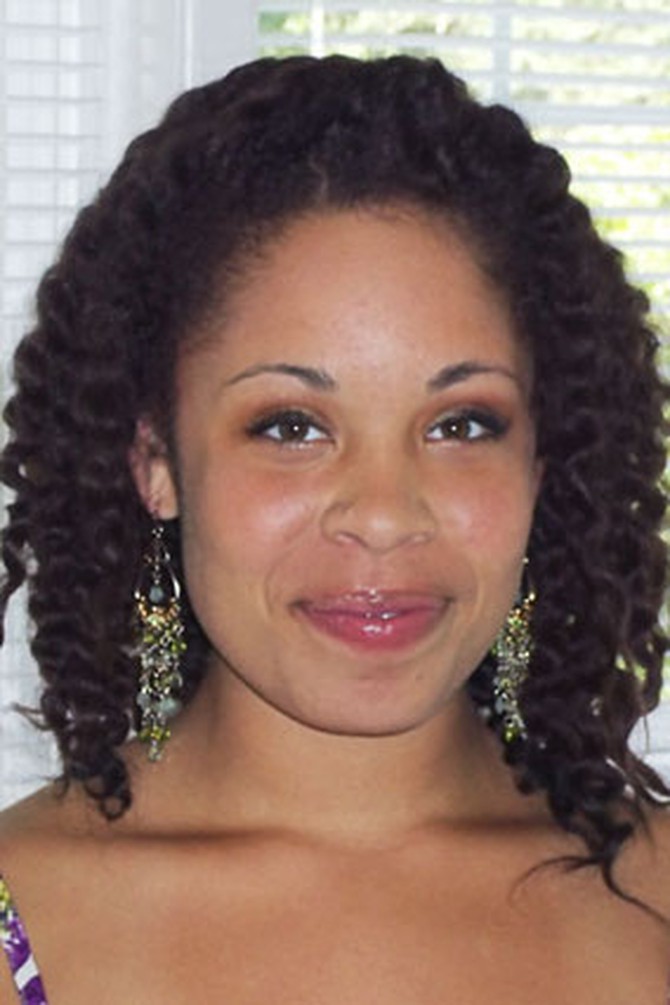
Photo: Courtesy of Robert Hoefer
The Truth-Teller: Victoria Ford
Who she is: An 18-year-old literary prodigy and a recent winner of a prestigious $10,000 Scholastic Art and Writing Award (previous winners: Joyce Carol Oates, Sylvia Plath, Truman Capote).
Her background: Ford's family is known for its political prominence throughout Tennessee; her uncle Harold Ford Sr. was an 11-term congressman from the state. But in 2005, her father, John, then a state senator, was arrested (and later convicted) for taking $55,000 in bribes. Two years later, Ford's mother was imprisoned for drunk driving. After moving in with her aunt in South Carolina, Ford attended two different high schools before being accepted to Governor's School for the Arts and Humanities, a rigorous residential program for emerging artists.
Breakthrough idea: Giving voice to the pain of her family falling apart. "When I first started writing, I thought conflict and drama would make the work good," she says. "But I realized that doesn't create art. Art comes from discovery. I had to ask questions of my situation and feelings. That changed my writing and my life."
What's next: Speaking to teens whose parents have been imprisoned.
Her work: "Maybe all you need to know is that this night will pass. Just like the rest of them. ... You won't always be this restless, this lonely." —From Ford's essay "To a Restless Little Brother Calling for Mama in his Sleep"
Breakthrough advice: "When you find something you love to do, love it, love it, love it. Good things come from bravely chasing what you love—don't let anybody steer you off course." —Crystal G. Martin
Her background: Ford's family is known for its political prominence throughout Tennessee; her uncle Harold Ford Sr. was an 11-term congressman from the state. But in 2005, her father, John, then a state senator, was arrested (and later convicted) for taking $55,000 in bribes. Two years later, Ford's mother was imprisoned for drunk driving. After moving in with her aunt in South Carolina, Ford attended two different high schools before being accepted to Governor's School for the Arts and Humanities, a rigorous residential program for emerging artists.
Breakthrough idea: Giving voice to the pain of her family falling apart. "When I first started writing, I thought conflict and drama would make the work good," she says. "But I realized that doesn't create art. Art comes from discovery. I had to ask questions of my situation and feelings. That changed my writing and my life."
What's next: Speaking to teens whose parents have been imprisoned.
Her work: "Maybe all you need to know is that this night will pass. Just like the rest of them. ... You won't always be this restless, this lonely." —From Ford's essay "To a Restless Little Brother Calling for Mama in his Sleep"
Breakthrough advice: "When you find something you love to do, love it, love it, love it. Good things come from bravely chasing what you love—don't let anybody steer you off course." —Crystal G. Martin
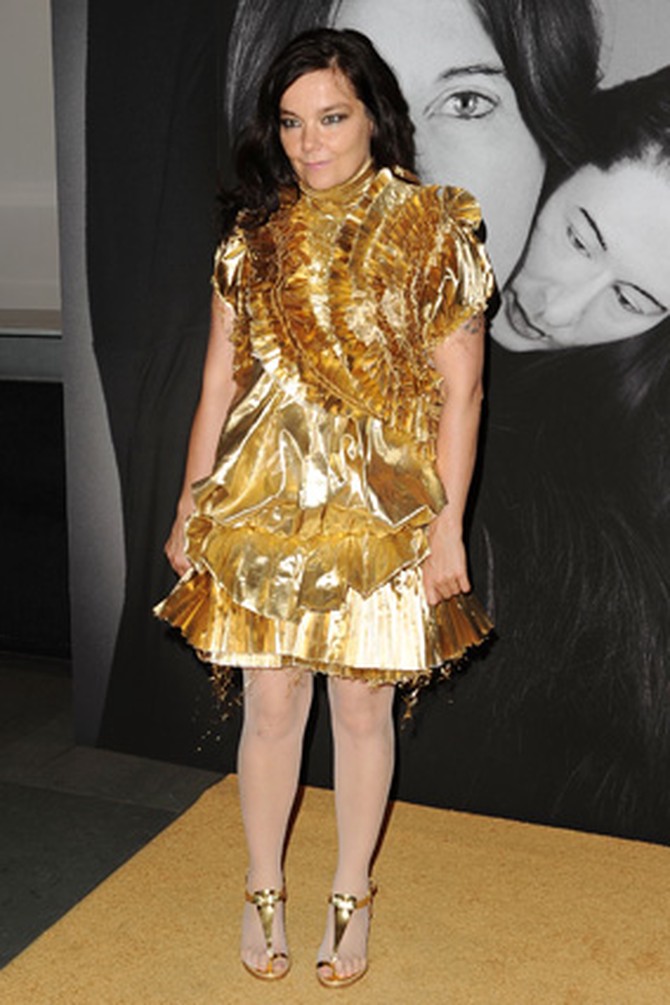
Photo: Getty Images
The Visionary: Björk
Who she is:
The boundary-busting Icelandic singer-songwriter who's sold 20 million albums.
Breakthrough idea: To explore how musicology—time signature, rhythm, cadence, melody, and harmony—originated in the natural world, through an unprecedented multimedia project called Biophilia. It includes a traditional ten-track album, a series of iPad and iPhone apps, a documentary, and a three-year world tour with museum residencies and children's workshops.
Her Aha! Moment: "Since I was a child, I have wanted to start a music school to teach children musicology in a more interactive way, and I finally felt that technology had caught up with us: The iPad was an ideal way to capture children's imaginations. For example, in the song 'Hollow,' they will make rhythms out of DNA strands on the app, inventing shapes with their fingers, and then 'hearing' the shapes they made."
Her biggest hurdles: For the project to work, a ten-foot pendulum harp had to be invented. Björk's team also crafted a unique way to move through the app. Biophilia is structured as a galaxy, with each song appearing as a star in a constellation. The nonlinear navigation allows users to surf the interactive games, essays, animation, and scores to take a million different journeys.
Lesson she's learned: "Sometimes diplomacy can be a web in which everyone gets stuck. This project only worked when we cut the crap and went straight to the point. It felt rude at first not to compromise, but then it became liberating. It wasn't personal; it was for the music." —Kristy Davis
Breakthrough idea: To explore how musicology—time signature, rhythm, cadence, melody, and harmony—originated in the natural world, through an unprecedented multimedia project called Biophilia. It includes a traditional ten-track album, a series of iPad and iPhone apps, a documentary, and a three-year world tour with museum residencies and children's workshops.
Her Aha! Moment: "Since I was a child, I have wanted to start a music school to teach children musicology in a more interactive way, and I finally felt that technology had caught up with us: The iPad was an ideal way to capture children's imaginations. For example, in the song 'Hollow,' they will make rhythms out of DNA strands on the app, inventing shapes with their fingers, and then 'hearing' the shapes they made."
Her biggest hurdles: For the project to work, a ten-foot pendulum harp had to be invented. Björk's team also crafted a unique way to move through the app. Biophilia is structured as a galaxy, with each song appearing as a star in a constellation. The nonlinear navigation allows users to surf the interactive games, essays, animation, and scores to take a million different journeys.
Lesson she's learned: "Sometimes diplomacy can be a web in which everyone gets stuck. This project only worked when we cut the crap and went straight to the point. It felt rude at first not to compromise, but then it became liberating. It wasn't personal; it was for the music." —Kristy Davis
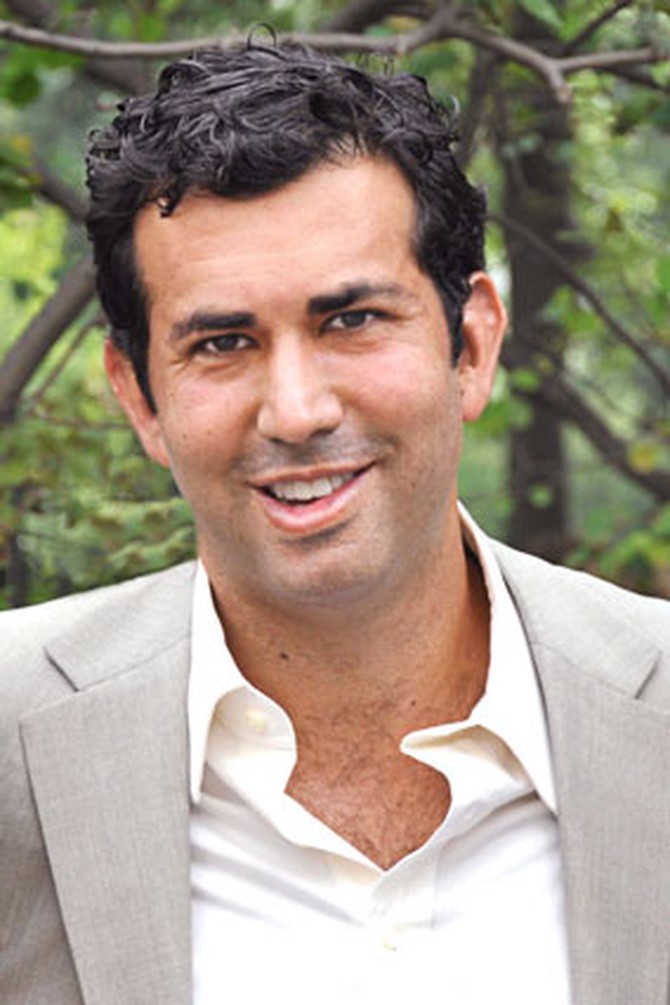
Photo: Courtesy of Drew Katz
The Connector: Drew Katz
Who he is: Founder of the Drew A. Katz Foundation, which has funneled more than $1,000,000 into nonprofits helping people at risk.
His background: Made serious money as a billboard entrepreneur; always knew he wanted to give back, just like his parents. "I grew up in a family of philanthropists. My mother had such a soft spot for those in need, like her hairdresser's children, whom she sent to summer camp; my father built Boys & Girls Clubs in Camden, New Jersey."
Breakthrough idea: With Tibet House cofounder Robert Thurman, convened a three-day Peace Education Summit last May in Newark, New Jersey, one of the nation's most violence-plagued cities. The 100-plus speakers—from former Sierra Leone child soldier Ishmael Beah to His Holiness the Dalai Lama—spanned the human experience. "It sparked conversations all around Newark—you'd go to the most difficult middle school and see peace murals they painted leading up to the summit. There's a ripple effect."
Lesson he's learned: "I didn't have delusions that Newark was going to be crime-free after this. But it did feel good to help create something that gave a lot of Newarkers a lot of pride."
Breakthrough advice: "You don't need incredible resources to impact another human being. You can make a difference by being conscious, by thinking of creative ways to make others feel good about themselves." —Lucy Kaylin
His background: Made serious money as a billboard entrepreneur; always knew he wanted to give back, just like his parents. "I grew up in a family of philanthropists. My mother had such a soft spot for those in need, like her hairdresser's children, whom she sent to summer camp; my father built Boys & Girls Clubs in Camden, New Jersey."
Breakthrough idea: With Tibet House cofounder Robert Thurman, convened a three-day Peace Education Summit last May in Newark, New Jersey, one of the nation's most violence-plagued cities. The 100-plus speakers—from former Sierra Leone child soldier Ishmael Beah to His Holiness the Dalai Lama—spanned the human experience. "It sparked conversations all around Newark—you'd go to the most difficult middle school and see peace murals they painted leading up to the summit. There's a ripple effect."
Lesson he's learned: "I didn't have delusions that Newark was going to be crime-free after this. But it did feel good to help create something that gave a lot of Newarkers a lot of pride."
Breakthrough advice: "You don't need incredible resources to impact another human being. You can make a difference by being conscious, by thinking of creative ways to make others feel good about themselves." —Lucy Kaylin
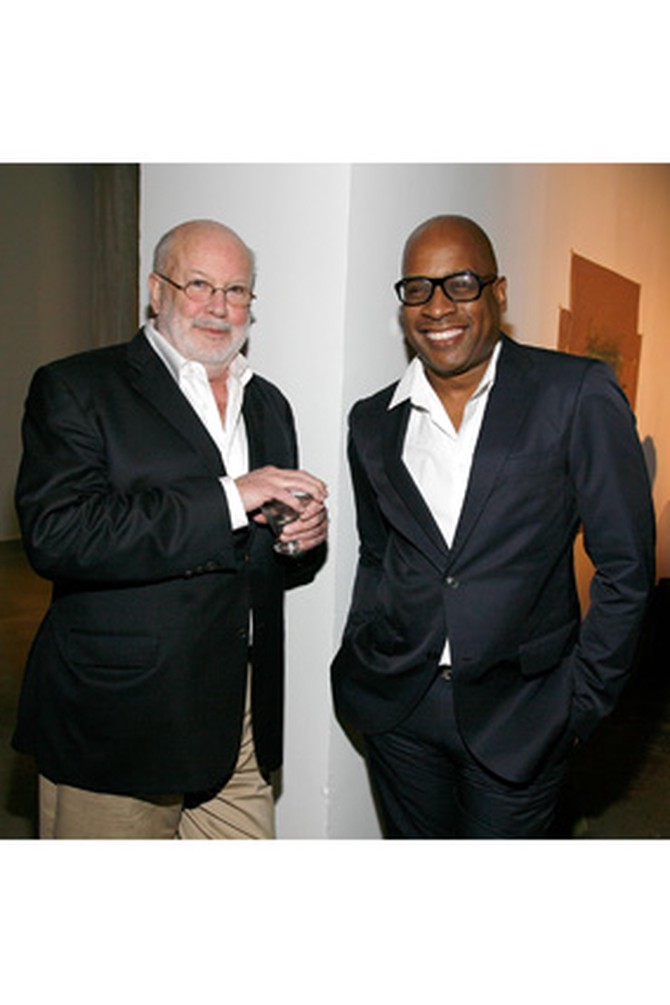
Photo: Getty Images
The Provacateur: Glenn Ligon
Who he is:
A painter and conceptual artist who uses text and video to explore American history and society. His pieces range from a 22-foot-long neon sign that spells out NEGRO SUNSHINE (a phrase appropriated from Gertrude Stein) to language-based paintings composed of jokes told by the comedian Richard Pryor to paintings based on black-history coloring books from the 1970s.
His background: When Ligon, who grew up in the Bronx, was in school, his mother enrolled him in drawing classes at the Metropolitan Museum of Art. But when he expressed interest in pursuing art as a career, she balked. "My mother said the only artists she ever heard of were dead," he says.
His Aha! Moment: After college, to support his art, Ligon spent some seven years proofreading documents on the graveyard shift at a law firm. Then, in 1989, the National Endowment for the Arts gave Ligon a $5,000 grant. "That grant clicked on the lightbulb in my head," he says. "If the government thinks I'm an artist..."
His breakthrough: In 2009 the Obamas included Ligon's Black Like Me #2, a stenciled work about the segregated South, in the art they borrowed for the White House walls. Earlier this year, the Whitney Museum of American Art presented a retrospective of his work, securing his place in the art history books. —Jennifer Stahl
His background: When Ligon, who grew up in the Bronx, was in school, his mother enrolled him in drawing classes at the Metropolitan Museum of Art. But when he expressed interest in pursuing art as a career, she balked. "My mother said the only artists she ever heard of were dead," he says.
His Aha! Moment: After college, to support his art, Ligon spent some seven years proofreading documents on the graveyard shift at a law firm. Then, in 1989, the National Endowment for the Arts gave Ligon a $5,000 grant. "That grant clicked on the lightbulb in my head," he says. "If the government thinks I'm an artist..."
His breakthrough: In 2009 the Obamas included Ligon's Black Like Me #2, a stenciled work about the segregated South, in the art they borrowed for the White House walls. Earlier this year, the Whitney Museum of American Art presented a retrospective of his work, securing his place in the art history books. —Jennifer Stahl
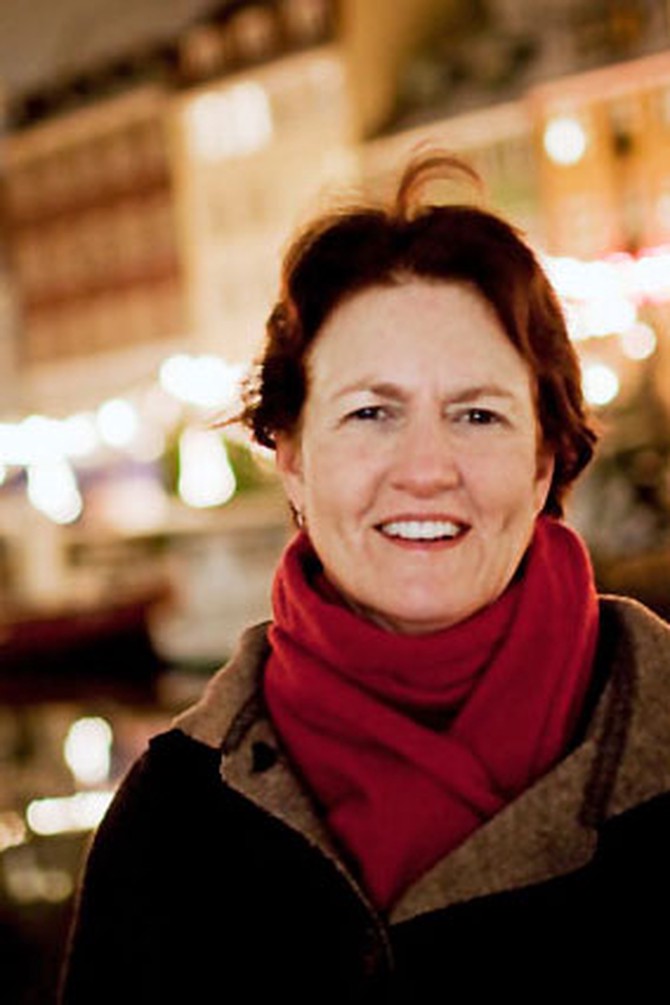
Photo: Anders Hansson
The Defender: Frances Beinecke
Who she is: President of the National Resources Defense Council, one of the most influential environmental groups in America, and part of President Obama's seven-member commission on the BP Deepwater
Horizon oil spill.
Her breakthrough: Creating a new—and highly effective—strategy for protecting the natural world. Far from granola-crunching, poncho-wearing picketers, Beinecke and the 1.3 million-member NRDC combine legal might, battalions of devoted (and deep-pocketed) supporters, cutting-edge science, and sharp communications skills to sue big polluters and fight for clean air and water, thriving forests and oceans, and a smart energy policy.
Lesson she's learned: Transformation trumps conciliation. "You think, 'Maybe we could get an agreement with the oil industry; maybe we could figure this out together.' And then you go, 'No. We're going toe to toe with the most powerful entity in the world.' We've got to break our oil addiction and head in a new direction."
What's next: A major roster of challenges so that all 6.9 billion of us can live well on a planet that, in her words, "grows ever smaller as our demands accelerate for all the same resources."
Breakthrough advice: "Don't leave those politicians alone. You elect them; hold them accountable." —Susan Casey
Her breakthrough: Creating a new—and highly effective—strategy for protecting the natural world. Far from granola-crunching, poncho-wearing picketers, Beinecke and the 1.3 million-member NRDC combine legal might, battalions of devoted (and deep-pocketed) supporters, cutting-edge science, and sharp communications skills to sue big polluters and fight for clean air and water, thriving forests and oceans, and a smart energy policy.
Lesson she's learned: Transformation trumps conciliation. "You think, 'Maybe we could get an agreement with the oil industry; maybe we could figure this out together.' And then you go, 'No. We're going toe to toe with the most powerful entity in the world.' We've got to break our oil addiction and head in a new direction."
What's next: A major roster of challenges so that all 6.9 billion of us can live well on a planet that, in her words, "grows ever smaller as our demands accelerate for all the same resources."
Breakthrough advice: "Don't leave those politicians alone. You elect them; hold them accountable." —Susan Casey

Photo: Dan Marshall, Courtesy of Marla Spivak
The Bees' Keeper: Marla Spivak
Who she is: A pioneering honeybee researcher, Spivak is helping to protect honeybees from colony collapse disorder. In recent years, the mysterious illness has decimated entire hives and, in turn, is threatening the broader food chain. Honeybees pollinate roughly one-third of the American food supply each year—$15 billion worth of crops. Some, like avocados, apples, and cherries, are 90 percent dependent on bees.
Breakthrough idea: Beekeepers have long used pesticides and antibiotics to control parasites and pathogens, but Spivak instead focused on the bees' traits. She began breeding a line of bees for "hygienic behavior," a genetically based trait that prompts bees to remove diseased or infested offspring from the hive to prevent the problem from spreading. "I knew it would be better for the bees to develop their own defenses and not have to rely on human intervention," she says.
What's next: Opening the Bee Research and Discovery Center, a hub of honeybee testing and data, laboratories, and public demonstrations on sustainable beekeeping and honey extraction.
What the experts say: "Saving the honeybees is one of the most important tasks we face. If we lose them, it will be very hard for us to feed ourselves." —Michael Pollan, author
Breakthrough advice: "Don't shy away from making mistakes—it means you're learning." —Tracie McMillan
Breakthrough idea: Beekeepers have long used pesticides and antibiotics to control parasites and pathogens, but Spivak instead focused on the bees' traits. She began breeding a line of bees for "hygienic behavior," a genetically based trait that prompts bees to remove diseased or infested offspring from the hive to prevent the problem from spreading. "I knew it would be better for the bees to develop their own defenses and not have to rely on human intervention," she says.
What's next: Opening the Bee Research and Discovery Center, a hub of honeybee testing and data, laboratories, and public demonstrations on sustainable beekeeping and honey extraction.
What the experts say: "Saving the honeybees is one of the most important tasks we face. If we lose them, it will be very hard for us to feed ourselves." —Michael Pollan, author
Breakthrough advice: "Don't shy away from making mistakes—it means you're learning." —Tracie McMillan
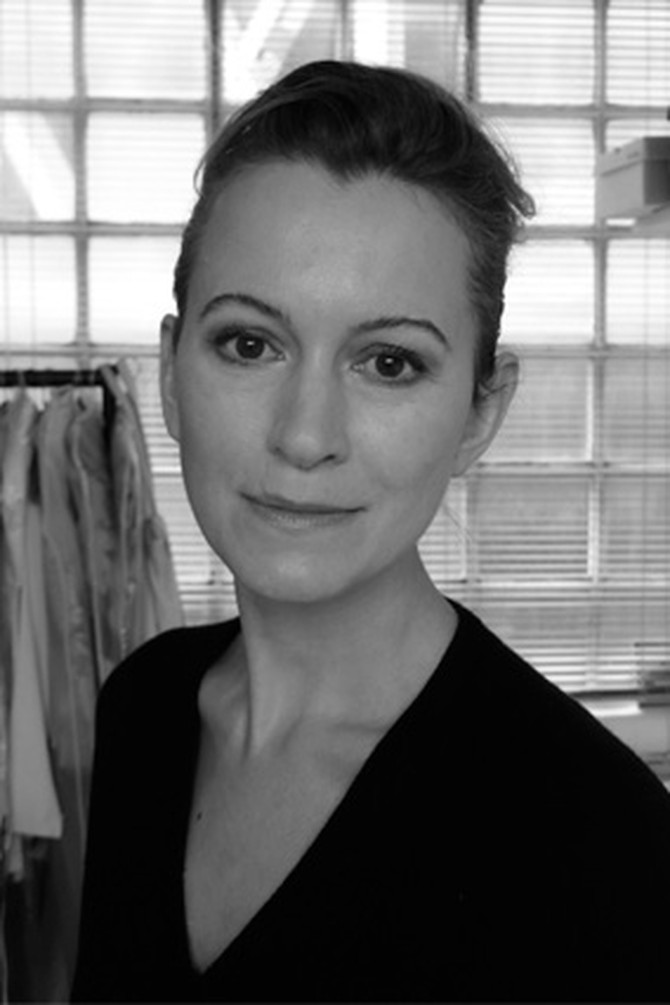
Photo: Courtesy of Fashion Futurist
The Futurista: Suzanne Lee
Who she is:
A British fashion designer and researcher who grows clothes in tubs of liquid. Sugar-fed bacteria spin tiny fibers to create a flexible cellulose material that Lee crafts into bomber jackets, vests, and other clothes.
Her background: Growing up, Lee loved fashion and science fiction. "I was always interested in what the fashion of the future might look like." She imagined a world of self-assembling raincoats and spray-on dresses in her book, Fashioning the Future: Tomorrow's Wardrobe.
Her Aha! Moment: At an art gallery, she struck up a conversation with materials scientist David Hepworth, PhD, who, intrigued by her fashion research, told her about bacteria that grow threads. "It was the wildest thing I'd ever heard," Lee says. "I immediately wanted to get in on that."
What's next: "The real challenge is to produce these clothes on a mass scale," she says. Rather than partner with traditional manufacturers, she's pursuing brewing processors, for their massive fermentation facilities. Up first: tote bags.
Breakthrough advice: "Play. My big breakthroughs happen when I'm open to possibility." —Rachel Mount
Her background: Growing up, Lee loved fashion and science fiction. "I was always interested in what the fashion of the future might look like." She imagined a world of self-assembling raincoats and spray-on dresses in her book, Fashioning the Future: Tomorrow's Wardrobe.
Her Aha! Moment: At an art gallery, she struck up a conversation with materials scientist David Hepworth, PhD, who, intrigued by her fashion research, told her about bacteria that grow threads. "It was the wildest thing I'd ever heard," Lee says. "I immediately wanted to get in on that."
What's next: "The real challenge is to produce these clothes on a mass scale," she says. Rather than partner with traditional manufacturers, she's pursuing brewing processors, for their massive fermentation facilities. Up first: tote bags.
Breakthrough advice: "Play. My big breakthroughs happen when I'm open to possibility." —Rachel Mount

Photos: Shawn Thomas, Catherine Smith, Chris Pieretti
The Yarnbomber: Magda Sayeg
Who she is:
A prodigious knitter who turns things like park benches and parking meters into vibrant, yarn-covered sculptures.
Her Aha! Moment : When Sayeg opened her Austin clothing boutique, Raye, it faced an imposing steel-and-glass building. Hoping for a more cheery view, she enlisted a knitter friend to help her wrap a nearby stop sign in yarn. "Suddenly," she says, "magic happened."
Breakthrough idea: Enlivening mass-produced, inanimate objects through the power of lovely, tactile handiwork—transforming a steel bike rack into a neon pink and yellow serpent or an entire Toyota Prius into a fuzzy, psychedelic clown car. Sayeg's work (specifically yarnbombed trees) has even appeared at the Blanton Museum of Art in Austin.
Her biggest hurdle: Convincing her nearest and dearest that she wasn't losing her mind. "Yarnbombing was so conceptual and weird," she says. "But even when it was criticized or my friends and family found it baffling, I wasn't ready to put it on the shelf. I'm glad I kept my confidence."
What's next: Yarnbombing a huge stairwell in Sydney and erecting a massive needlepoint banner beneath Brooklyn's Williamsburg Bridge. She also hopes to create a line of, yes, knitwear.
Breakthrough advice: "There's this belief that if you don't have formal training, you're going to fail. But you can figure out how to do anything your own way." —Katie Arnold-Ratliff
Her Aha! Moment : When Sayeg opened her Austin clothing boutique, Raye, it faced an imposing steel-and-glass building. Hoping for a more cheery view, she enlisted a knitter friend to help her wrap a nearby stop sign in yarn. "Suddenly," she says, "magic happened."
Breakthrough idea: Enlivening mass-produced, inanimate objects through the power of lovely, tactile handiwork—transforming a steel bike rack into a neon pink and yellow serpent or an entire Toyota Prius into a fuzzy, psychedelic clown car. Sayeg's work (specifically yarnbombed trees) has even appeared at the Blanton Museum of Art in Austin.
Her biggest hurdle: Convincing her nearest and dearest that she wasn't losing her mind. "Yarnbombing was so conceptual and weird," she says. "But even when it was criticized or my friends and family found it baffling, I wasn't ready to put it on the shelf. I'm glad I kept my confidence."
What's next: Yarnbombing a huge stairwell in Sydney and erecting a massive needlepoint banner beneath Brooklyn's Williamsburg Bridge. She also hopes to create a line of, yes, knitwear.
Breakthrough advice: "There's this belief that if you don't have formal training, you're going to fail. But you can figure out how to do anything your own way." —Katie Arnold-Ratliff
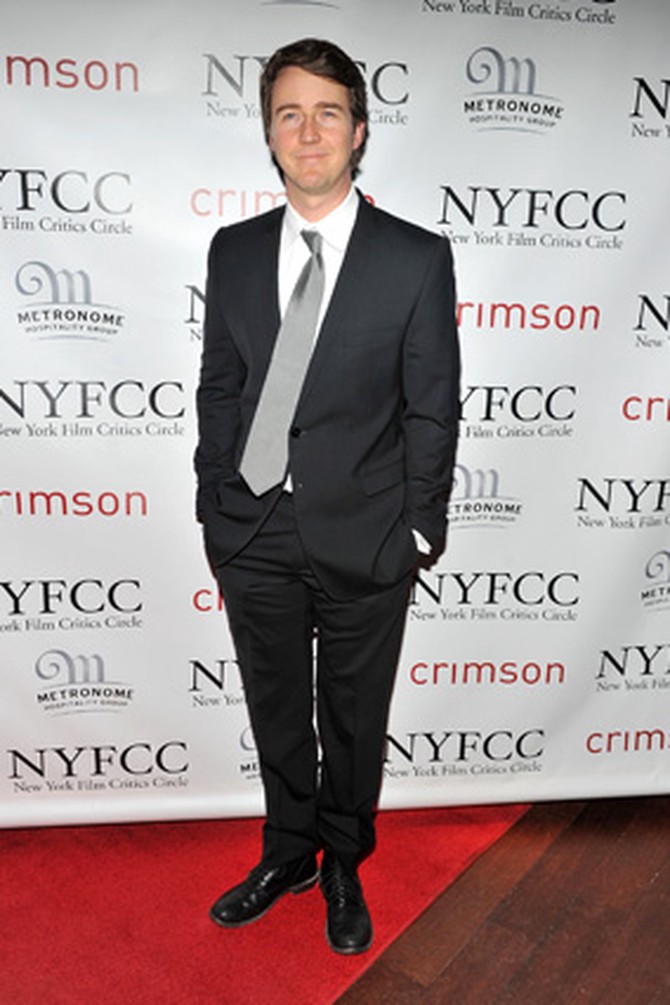
Photo: Getty Images
The Game Changer: Edward Norton
Who he is: An actor (Fight Club, The Incredible Hulk) who is revolutionizing philanthropy by making fund-raising competitive and fun.
His Aha! Moment: "The dirty secret about raising money is that it costs a lot of money—usually 20 to 40 percent," Norton says. While working with Barack Obama's presidential campaign, he was struck by the young donors who used social networking to nudge others to donate, thus bypassing the costs associated with traditional fund-raising. "That was a seismic moment."
Breakthrough idea: With movie producer (and fiancée) Shauna Robertson, and Jeffro and Robert Wolfe (founders of online retailer Moosejaw), created Crowdrise. The site allows anyone—from teens to celebs—to set up a free profile to solicit donations for worthy causes. Barbra Streisand has pulled in nearly $150,000 for the Women's Heart Center at Cedars-Sinai. Will Ferrell, offering a golf sweepstakes, has raised some $30,000 for cancer survivors. For every dollar raised, users earn bragging rights on the Crowdrise leaderboard and points they can swap for prizes like a MacBook Pro, a Kindle—even a personalized video from Norton.
Breakthrough advice: Stay open to what excites you. "A couple of years ago, I never would have said I'd be spending more than two-thirds of my time working on a fund-raising Web site." —Kristy Davis
For more information about Crowdrise, please go to www.crowdrise.com.
His Aha! Moment: "The dirty secret about raising money is that it costs a lot of money—usually 20 to 40 percent," Norton says. While working with Barack Obama's presidential campaign, he was struck by the young donors who used social networking to nudge others to donate, thus bypassing the costs associated with traditional fund-raising. "That was a seismic moment."
Breakthrough idea: With movie producer (and fiancée) Shauna Robertson, and Jeffro and Robert Wolfe (founders of online retailer Moosejaw), created Crowdrise. The site allows anyone—from teens to celebs—to set up a free profile to solicit donations for worthy causes. Barbra Streisand has pulled in nearly $150,000 for the Women's Heart Center at Cedars-Sinai. Will Ferrell, offering a golf sweepstakes, has raised some $30,000 for cancer survivors. For every dollar raised, users earn bragging rights on the Crowdrise leaderboard and points they can swap for prizes like a MacBook Pro, a Kindle—even a personalized video from Norton.
Breakthrough advice: Stay open to what excites you. "A couple of years ago, I never would have said I'd be spending more than two-thirds of my time working on a fund-raising Web site." —Kristy Davis
For more information about Crowdrise, please go to www.crowdrise.com.
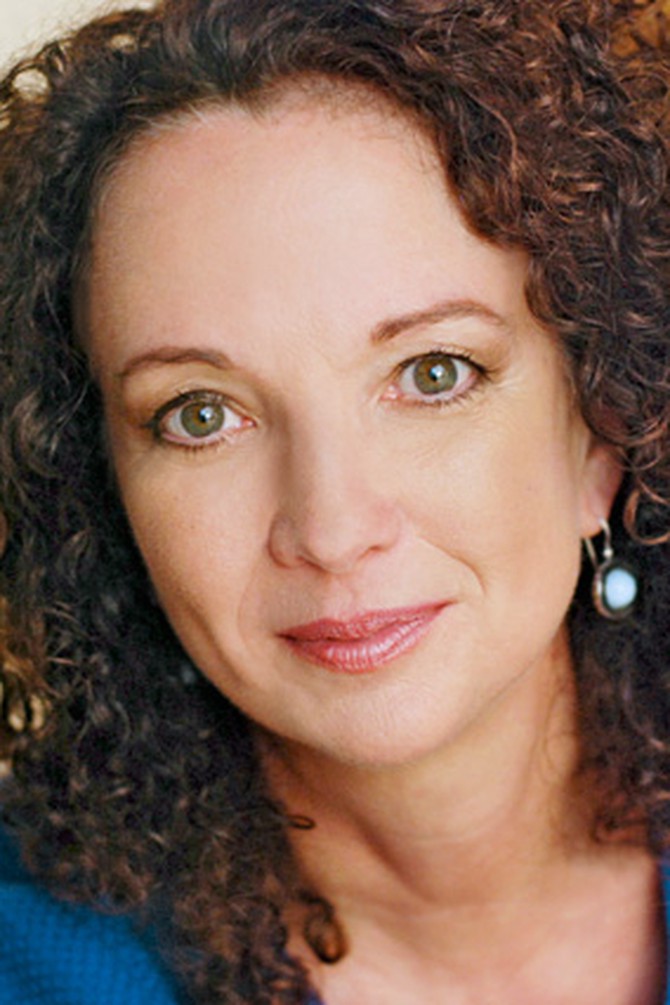
Photo: Irene Young
The Equalizer: Victoria Hale
Her Aha! Moment: One day in a New York City cab, the Nigerian driver asked passenger Victoria Hale, a former scientist at Big Pharma company Genentech, what she did for a living. "When I told him I was a pharmaceutical scientist, he said, 'Oh, you have all the money!' And I realized, this is the moment to launch my vision."
Breakthrough idea: Hale started the first nonprofit pharmaceutical company in the United States, OneWorld Health. It develops drugs to fight diseases like malaria and black fever that traditional companies don't pursue because they don't bring in enough money. With Medicines360, her latest nonprofit pharma company, Hale has created a model that doesn't rely on grants and donors: She plans to sell affordable contraception in Western countries, then use that revenue to distribute health products around the world to women who can't afford them.
Lesson she's learned: "If I see the path to an end, I want us to be there tomorrow. I want the whole world to achieve it. But change takes time."
Breakthrough advice: "Share your idea. Some people are going to say, 'That's the dumbest thing I have ever heard,' and some people are going to say, 'Oh my gosh, you are brilliant.' And you need to listen to both." —Elizabeth Svoboda
Breakthrough idea: Hale started the first nonprofit pharmaceutical company in the United States, OneWorld Health. It develops drugs to fight diseases like malaria and black fever that traditional companies don't pursue because they don't bring in enough money. With Medicines360, her latest nonprofit pharma company, Hale has created a model that doesn't rely on grants and donors: She plans to sell affordable contraception in Western countries, then use that revenue to distribute health products around the world to women who can't afford them.
Lesson she's learned: "If I see the path to an end, I want us to be there tomorrow. I want the whole world to achieve it. But change takes time."
Breakthrough advice: "Share your idea. Some people are going to say, 'That's the dumbest thing I have ever heard,' and some people are going to say, 'Oh my gosh, you are brilliant.' And you need to listen to both." —Elizabeth Svoboda
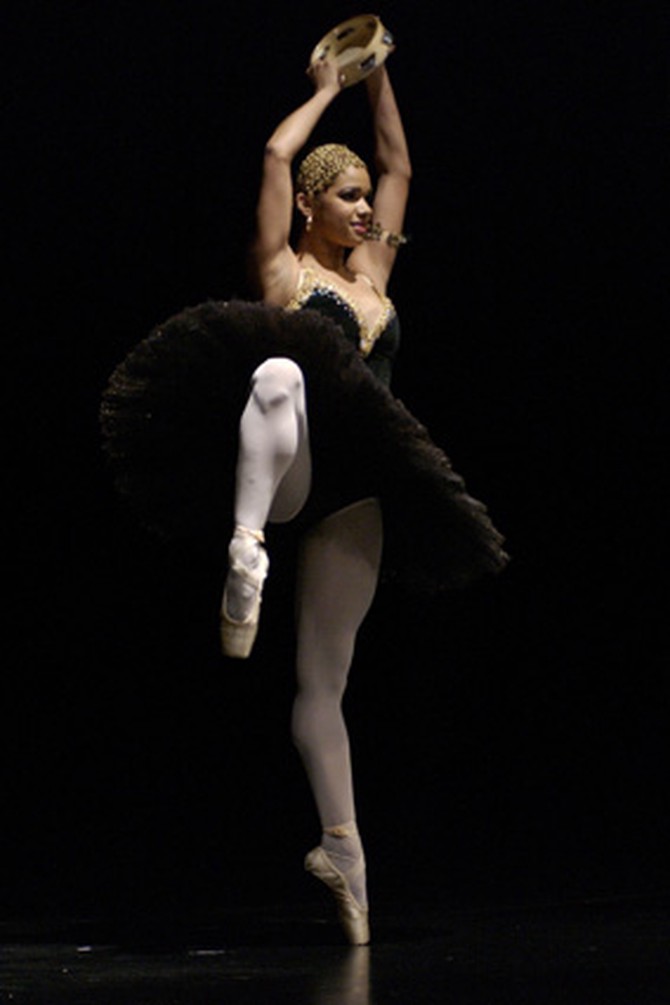
Photo: Getty Images
The Muse: Misty Copeland
Who she is: The American Ballet Theatre's first female African-American soloist, Copeland is also an inspiration to funk legend Prince, contributing her dynamic, mesmerizing moves to his tour and one of his videos.
Her biggest hurdle: A woman of color with curves, Copeland doesn't resemble the typical ballerina. "My body type has been an obstacle," she says—and so has her race. "When I first joined the company, I didn't really notice. Then a board member said, 'You might be the first black ballerina here.' I looked around and was like, 'Oh.' It's something the ballet world is still getting used to."
Lesson she's learned: When Copeland started at ABT at age 18, she hit the town almost as much as she danced. "I wanted to date and see things," she says. "But it's hard to call that a mistake. You bring your life experience to your art. If I hadn't lived during that time, I wouldn't be the dancer I am."
What the experts say: "She has an incredible talent for organic movement." —Kevin McKenzie, Artistic Director, American Ballet Theatre
Breakthrough advice: "If you try something and you feel a connection to it, you have to pursue it." —Katie Arnold-Ratliff
Her biggest hurdle: A woman of color with curves, Copeland doesn't resemble the typical ballerina. "My body type has been an obstacle," she says—and so has her race. "When I first joined the company, I didn't really notice. Then a board member said, 'You might be the first black ballerina here.' I looked around and was like, 'Oh.' It's something the ballet world is still getting used to."
Lesson she's learned: When Copeland started at ABT at age 18, she hit the town almost as much as she danced. "I wanted to date and see things," she says. "But it's hard to call that a mistake. You bring your life experience to your art. If I hadn't lived during that time, I wouldn't be the dancer I am."
What the experts say: "She has an incredible talent for organic movement." —Kevin McKenzie, Artistic Director, American Ballet Theatre
Breakthrough advice: "If you try something and you feel a connection to it, you have to pursue it." —Katie Arnold-Ratliff
Published 09/15/2011

